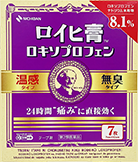
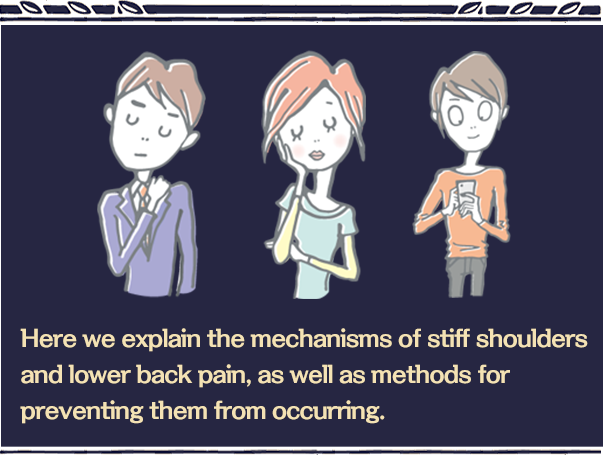
Don’t give in to stiff shoulders or lower back pain!
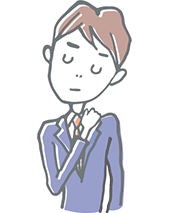
According to the Comprehensive Survey of Living Conditions (2013) compiled by the Ministry of Health, Labour and Welfare, two of the most common symptoms that Japanese people report are “shoulder stiffness” and “lower back pain.” Amongst men, “lower back pain” ranks Number 1 and “stiff shoulders” ranks Number 2, while amongst women “stiff shoulders” ranks Number 1 and “lower back pain” ranks Number 2.
Moreover, these symptoms are not limited to adults?there are also children as young as 10 years of age complaining “shoulder stiffness” and “lower back pain.” Intolerable shoulder stiffness and lower back pain is suffered by both adults and children alike.
Let’s learn how and why do these phenomena occur, and what measures can be taken to handle them appropriately.
Mechanisms causing stiff shoulders/lower back pain
Shoulder stiffness is said to occur when muscles from the neck to the shoulder tighten, causing pain.
There are many types of lower back pain, but if no deformities can be seen on an x-ray, in the majority of cases the pain stems from muscular tension.
That is to say, most shoulder stiffness and lower back pain that occurs in everyday living is caused by muscle pain.
So, how does this pain occur?
If you remain in the same position for an extended period of time, an excessive burden in placed on the neck/shoulders and lower back, while in cool environments the muscles tense and harden, compressing the blood vessels and sensory nerves around the muscles. The blood flow in the compressed vessels decreases, and pain is felt by the sensory nerves.
Furthermore, the blood has the roles of supplying nutrients and oxygen to the muscles and carrying away waste matter from the muscles, and so if the blood flow decreases, the blood cannot adequately perform its important roles. If this happens, waste matter builds up in the muscles, causing them to tighten; this then compresses the blood vessels and sensory nerves even more. This viscous cycle leads to chronic shoulder stiffness and lower back pain.
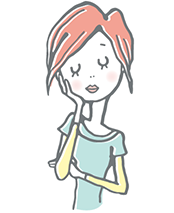
Furthermore, stress is also said to cause shoulder stiffness and lower back pain. The human body contains a nervous system called the autonomic nervous system; this system maintains balance between states of tension and relaxation while we are not even aware it is doing so. When an imbalance occurs amongst the autonomic nerves due to stress or other factors and a state of tension in constantly maintained, adjustments throughout the body go haywire, causing peripheral blood vessels to contract. Consequently, the muscles to which the blood flow has decreased tighten, compressing the sensory nerves and causing the sensation of stiff shoulders or lower back pain.
When subjected to continual compression, the sensory nerves may sometimes be damaged. Pain or numbness caused by nerve damage is not easily relieved by taking a bath or having a massage. We recommend that you take measures quickly to relieve the stiffness/pain before the situation deteriorates to this extent.
Environments conducive to causing shoulder stiffness and lower back pain
Have you ever met someone who said, “I’ve never had stiff shoulders”?
Apparently there are people in the world who get stiff shoulders and lower back pain easily, and others who seem resistant to stiff shoulders and lower back pain.
The phenomenon of stiff shoulders is affected by living habits in addition to body type, posture, and other factors.
As an issue related to body type, people with sloping or hunched shoulders and people with bad posture are said to be highly susceptible to shoulder stiffness. As an issue related to living habits, people whose work involves staying in a position where the neck and lower back are tensed from lengthy periods and people who do not get sufficient exercise are said to be highly prone to stiff shoulders. In addition, people in environments where their shoulders and necks are cooled by air-conditioning and people who are in a continual state of tension due to stress are also highly susceptible to stiff shoulders.
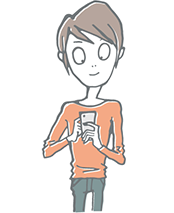
In addition, a symptom known as “straight neck” has recently been gaining attention. This system tends to be caused by looking at the screen of a smartphone in the same position from long periods of time.
The backbone down the back from the neck is naturally curved and this is the normal state, but when a person is staring continuously at a smartphone or other small screen for a long period of time, the muscles of the neck and surrounding areas remain tensed and t hen harden, causing the bone to straighten. “Straight neck” causes stiff shoulders and headaches. If the symptoms further worsen, they can cause dizziness and numbness in the hands and feet, so care is required.

Virtually the same can be said for lower back pain.
People who hunch their shoulders or with their backs against the back of the chair and their buttocks pushed forward (so-called “sunken sitting”) are highly susceptible to lower back pain. Moreover, for people who maintain squatting or bent-forward positions for extended periods of time, or have jobs where they sit or stand for long periods at a time, a tremendous burden in placed on the lower back. Many people in occupations such as nursing care or taxi driving suffer from lower back pain.
In addition, if a person stops exercising due to lower back pain, the muscles supporting the lower back may weaken, making it even easier for lower back pain to occur and thereby creating a vicious circle.。
Stiff shoulders and lower back pain are not just for adults!
It is common to this that only adults and elderly people suffer from lower back pain. From an adults’ perspective, children’s bodies are supple and they have recuperative power, so even if they do experience stiff shoulders or lower back pain, it’s surely not a big deal, right? People may think this, but in fact an increasing number of children are now claiming to suffer from stiff shoulders and/or lower back pain
The fact that children’s lifestyles have been changing in recent years can be said to be one factor in the increase in shoulder stiffness and lower back pain amongst children. The amount of time children spend playing sports or playing outside has decreased, and the amount of time they spend at coaching schools or cultural lessons, or playing indoors is increasing.
Due to the decrease in opportunities for physical activity, children’s physical strength and sporting skills are continuing to decline. It has been pointed out that this has led to a worsening of posture amongst children, with an increasing number of children unable to stand straight or sit up straight in a chair, or who constantly need to lean on something for support. In addition to insufficient muscle strength, children’s bad posture makes them more susceptible to stiff shoulders and lower back pain.

For children who do not play outside, two ways in which they may play indoors are with electronic games or with smartphones. The more absorbed they become, the longer they remain in the same position for long periods of time, and so this makes them more susceptible to stiff shoulders and lower back pain. Furthermore, survey results have indicated that the longer a child spends using an electronic game or smartphone, the lower their physical strength tends to be.
In addition, the fact that there is an increasing number of children with a low body temperature is not unrelated to shoulder stiffness and lower back pain. Since children with low body temperatures have poor blood flow, nutrients and oxygen do not reach the muscles in sufficient amounts, and it is also difficult for the blood to remove waste. Causes of low body temperature include insufficient exercise (insufficient muscle strength), unbalanced diet, irregular lifestyles, and insufficient sleep.
To ensure children’s healthy growth, it is essential that they have lifestyles that are not conducive to shoulder stiffness or lower back pain.
Preventing shoulder stiffness and lower back pain
No one wants to have stiff shoulders or lower back pain. Let’s then consider the kinds of lifestyles that make people more resistant to shoulder stiffness and/or lower back pain.
First of all, do not stand/sit in the same position for long periods of time.
Working on the computer, staring at a smartphone screen, sitting or standing?remaining in the same position without moving for long periods of time makes it easy for muscles to tense up. As far as possible, take regular breaks to loosen the tension in your muscles.
For example, the Guideline for Industrial Health Controls of VDT [Visual Display Terminal] Operations recommended by the Ministry of Health, Labour and Welfare suggested taking a rest break of 10?15 minutes each hour of continuous operations when working on a VDT (work involving inputting, programming, monitoring using devices with displays).
For children, set times and time limits for them to play with electronic games or smartphones.
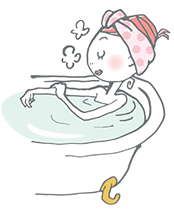
Next, warm up the body.
Warming the body by taking a bath or some other means improves blood circulation, which is helpful in easing muscular tension. When bathing, it is recommended that you fill the bathtub with warm (not hot) water and then soak in the tub (taking a shower is not as effective). If the water is too hot, you will not be able to soak in it for a long time, and so only the surface of the body will warm up; if you use warm water, however, and soak from a long time, the body will be thoroughly warmed. Furthermore, since the bath is also relaxing, taking a bath is also recommended for when you are feeling stressed.
You can also warm up specific points on your body using heating pads or hot packs.
Next, a suitable amount of exercise.
When you are feeling pain, you must not force yourself to exercise, but it is recommended that you prevent loss of muscle strength by moving your body as much as possible in your daily life. Moving you muscles improves blood circulation and generates heat, and so your body also warms up.
While taking care of yourself on an everyday basis, it is also appropriate to use medicinal plasters and patches where pain is intolerable. If even this does not relieve the pain, it is possible that there is another underlying ailment, and so it is recommended that you consult a doctor.
ROIHI-TSUBOKO™ Cool type / Warm type
-
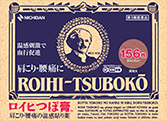 【Warm type】
ROIHI-TSUBOKO™
Effective, tingling heat stimulation!
See details.
【Warm type】
ROIHI-TSUBOKO™
Effective, tingling heat stimulation!
See details.
-
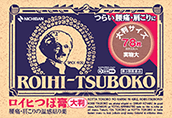 【Warm type】
ROIHI-TSUBOKO™ Big
For wider areas of shoulder stiffness or pain.
See details.
【Warm type】
ROIHI-TSUBOKO™ Big
For wider areas of shoulder stiffness or pain.
See details.
-
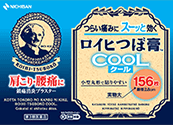 【Cool type】
ROIHI-TSUBOKO™ COOL
Cool relief for intolerable pain
See details.
【Cool type】
ROIHI-TSUBOKO™ COOL
Cool relief for intolerable pain
See details.
-
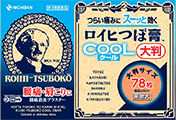 【Cool type】
ROIHI-TSUBOKO™ COOL Big
The Large- sized of ROIHI-RSUBOKO™ COOL
See details.
【Cool type】
ROIHI-TSUBOKO™ COOL Big
The Large- sized of ROIHI-RSUBOKO™ COOL
See details.



